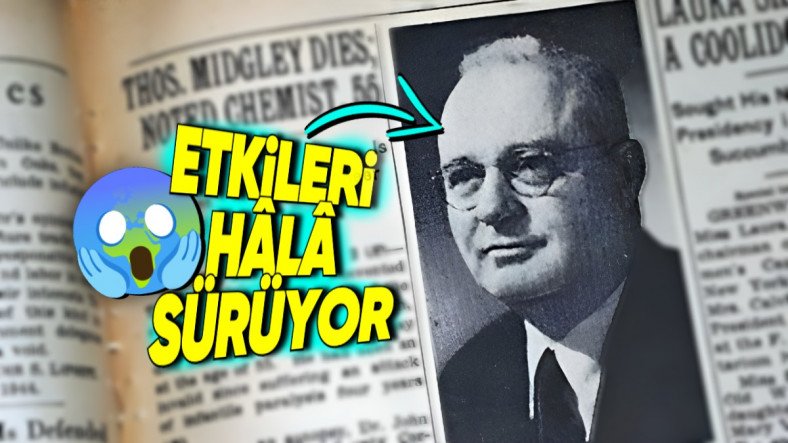
Gezegeni Yok Olma Noktasına Getiren Bilim Adamının İcadı Nedir?
“`html
In the early 1920s, Thomas Midgley Jr. pioneered the use of leaded gasoline in vehicles and later popularized the use of a substance called Freon in refrigeration units.
Both of these substances caused extensive harm to the planet and people’s health. Their effects are still being felt today.
What is leaded gasoline and what consequences can it lead to?
Leaded gasoline was used in the past because it contained a additive called tetraethyl lead (TEL), which increased the octane level of gasoline, enhancing engine efficiency.
However, it also caused severe environmental and health issues. Lead entering the body through respiration and digestion can easily reach the brain, affecting even the cognitive development of young children.
Interestingly, the use of leaded gasoline has led to a collective loss of 824 IQ points among over 170 million Americans, averaging a 3-point drop per person, with some periods seeing increases above 6 points.
The adoption of leaded gasoline in 1921 was motivated by profit.
To prevent knocking in the engine cylinder, tetraethyl lead was not the sole solution; alternatives existed, such as a gasoline-ethanol blend. Nevertheless, Thomas Midgley Jr. chose to develop lead, despite knowing it was a harmful element. He marketed it under the names “Ethyl” or “TEL” to alleviate public concern.
Additionally, he would profit from the TEL patent, as he couldn’t patent ethanol. Thus, he ignored all health and environmental issues to launch leaded gasoline into the market.
Midgley stood by his product.
Thomas Midgley came from an inventive family; his father worked on automobile tires, and his grandfather invented the reciprocating saw. Expectations were high for him.
In October 1924, he immersed his hand in tetraethyl lead to demonstrate its safety to others.
That year, five workers in New Jersey exposed to TEL died, but health services reported there was no reason to ban leaded gasoline, suggesting the workers just needed to follow safety rules.
The dangers of lead were known at that time.
Vehicle owners using leaded gasoline had detectable levels of lead in their blood, and traces of lead were found in garages. All this was supported by scientific research at the time.
Despite this knowledge, leaded gasoline continued to be used for many years until it was banned in 1996. The legacy of leaded gasoline persists even today.
Another environmental damage caused by Midgley.
In the late 1920s, the compounds used in air conditioning and refrigeration systems were toxic, flammable, and explosive. A team, including Midgley, was tasked to develop alternatives.
They created the substance “Freon,” which quickly became popular. However, it was harmful to the ozone layer, a potent greenhouse gas, and disrupted the food chain by affecting essential life forms like plankton in the oceans.
The Montreal Protocol signed in 1987 restricted the production and use of Freon, leading to the development of less harmful alternatives.
Midgley’s death was rather peculiar.
Midgley did not witness the consequences of his actions. In 1940, at age 51, he suffered from polio and became bedridden. Yet, he continued to innovate.
He devised a pulley system to lift himself from bed, but in 1944, the cords got caught around his neck, leading to his accidental demise.
You might find these interesting:
“`



